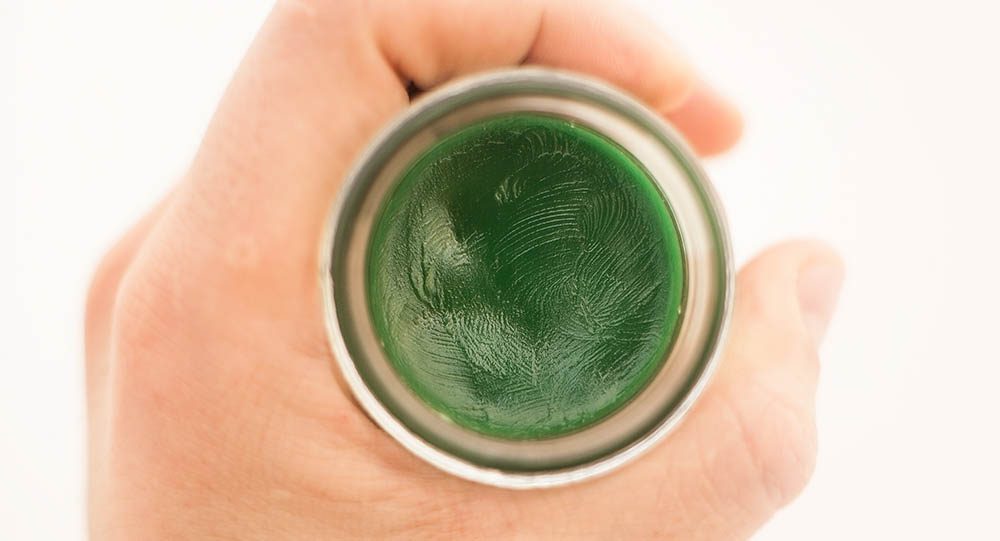In This Article
- What is Sciatica?
- Causes of Sciatica
- Common Symptoms of Sciatica
- Treatment for Sciatica
- CBD for Sciatica: Does it Work?
- What the Research Says
- How Can CBD Help with Sciatica?
- Pros and Cons of Using CBD for Sciatica
- Pros
- Cons
- Ask a Budtender: What’s the Best CBD for Sciatica Pain Relief?
- CBD Vapes
- Topicals
- Tinctures
- CBD Gummies
- CBD Flower
- CBD for Sciatica FAQ
- How Much CBD Should I Take for Sciatica/What Is the Right Dosage?
- Who Shouldn’t Use CBD for Sciatic Pain Relief?
- How Do I Determine Which CBD Product Type to Use?
- When Should I See a Doctor?
- The Promise of CBD for Sciatica Relief
- References
If you've ever experienced the jolt of pain referred to as sciatica, you understand the desperate search for relief. Sciatica is a symptom of a larger issue, typically pinching of the sciatic nerve, leading to pain radiating down the back into the leg.
One in four older Americans has experienced some form of sciatica during their lifetime and also tends to have higher rates of other physical conditions and depression alongside this debilitating pain.
In a world brimming with medications and treatments, a rising trend has been the use of cannabidiol (CBD), a non-intoxicating compound in cannabis, for pain relief.
As CBD has been widely acclaimed for its anti-inflammatory and pain-reducing properties, it begs the question: Can CBD be the answer for those suffering from sciatica?
What is Sciatica?
Have you ever felt a sharp pain shooting down your leg? It might be sciatica.
Sciatica refers to the pain that radiates along the path of the sciatic nerve, which branches from your lower back through your hips and buttocks and down each leg. This pain can range from mild to severe and is often accompanied by other symptoms.
Causes of Sciatica
Sciatica often occurs when the sciatic nerve becomes pinched. Common causes of this pinching include:
- Lumbar Herniated Disc: Also known as a slipped or ruptured disc, this condition occurs when the soft inner part of the disc protrudes through the tougher exterior, irritating the nearby sciatic nerve.
- Bone Spurs and Spinal Stenosis: Overgrowth of bone or narrowing of the spaces within the spine can press on the nerves.
- Spondylolisthesis: This condition happens when one vertebra slips forward over the one beneath it, pinching the sciatic nerve.
- Spinal Tumors or Infections: Rarely, these can impinge on the sciatic nerve.
- Trauma: Accidents or injuries can result in bone fractures or direct trauma to the sciatic nerve.
- Pregnancy: The added weight and shifted center of gravity can put additional pressure on the lower back, potentially compressing the sciatic nerve.
- Piriformis Syndrome and Muscle Spasms: The sciatic nerve can be compressed when the piriformis muscle, located in the buttock, spasms or tightness. Other muscle spasms in the lower back or buttocks can also compress the sciatic nerve, leading to pain.
Common Symptoms of Sciatica
Sciatica is characterized primarily by pain that typically affects one side of the body. However, this pain can manifest in various ways and is often accompanied by other symptoms:
- Pain: Ranging from a mild ache to a sharp, burning sensation or even excruciating discomfort. This pain can start in the lower back and radiate through the buttock, traveling down the large sciatic nerve in the back of the affected leg.
- Tingling or Numbness: Often felt in the affected leg, sometimes described as pins and needles.
- Weakness: This can occur in the affected leg, possibly leading to difficulty moving the leg.
- Aggravation from Prolonged Sitting: The pain can intensify when seated for extended periods. Other factors like coughing, sneezing, or standing for a long time may also exacerbate the pain.
Treatment for Sciatica
The goal of treatment is to reduce pain and improve mobility. The approach taken often depends on the cause of the sciatica and the severity of symptoms:
- Physical Therapy: This is often the first line of treatment, where therapists can guide patients through exercises to improve posture, strengthen muscles supporting the back, and increase flexibility.
- Heat and Cold Therapy: Starting with cold packs can help reduce inflammation. Subsequently, heat can help in decreasing muscle spasms.
- Medications: Over-the-counter pain relievers can be effective. In more severe cases, doctors may recommend prescription medications, such as muscle relaxants, narcotics, tricyclic antidepressants, or anti-seizure medications.
- Injections: If conservative treatments fail, some people benefit from corticosteroid injections to reduce inflammation around the nerve.
- Surgery: This is usually reserved for cases where the compressed nerve causes significant weakness, incontinence, or when the pain gets progressively worse or doesn't improve with other treatments.
- Alternative Therapies: Techniques like chiropractic adjustments, acupuncture, and massage therapy might provide relief for some.
- Self-care Measures: Good posture, frequent stretching, and avoiding lengthy periods of sitting can be crucial in managing and preventing sciatica symptoms.
Always seek guidance from a healthcare professional to determine the best treatment approach tailored to your individual circumstances.
CBD for Sciatica: Does it Work?

For those tormented by the searing pain of sciatica, the pursuit of pain relief often feels unending. Recently, the spotlight has shifted towards CBD. But what does science have to say about using CBD for sciatica?
What the Research Says
A 2017 clinical review revealed that CBD may suppress increased astrocyte activity in models that closely resemble sciatic nerve injury.1 In simpler terms, CBD might have the power to influence the very cells that play a role in conditions like sciatica.
In a 2019 study, mice, when given orally consumed cannabinoids like tetrahydrocannabinol (THC) and CBD, exhibited long-lasting relief from chronic neuropathic pain. One notable aspect of CBD is its nonintoxicating properties, along with its lack of efficacy in pain-free conditions.2
Research has also hinted at the promise of an oral blend of THC, CBD, and their combined therapeutic power, especially if initiated promptly after peripheral nerve constriction based on a 2020 study.3
Topical CBD application has also proven to be effective for sciatic pain. A pilot study threw light on CBD’s potential efficacy in treating the harrowing pain of peripheral neuropathy.4
How Can CBD Help with Sciatica?
The mechanisms by which CBD aids in pain relief, especially in conditions like sciatica, revolve around its interaction with the body's endocannabinoid system (ECS). CBD’s anti-inflammatory properties may potentially diminish pain and inflammation. Moreover, CBD may modulate the activity of specific cells (like astrocytes) involved in neurodegenerative conditions, further contributing to its potential efficacy against sciatica.1
Pros and Cons of Using CBD for Sciatica
The use of CBD for managing various ailments, including sciatica, has gained considerable attention. But like any therapeutic approach, it’s important to weigh the benefits against the potential drawbacks. Here's a comprehensive overview of the pros and cons of using CBD for sciatica:
Pros
- Long-Lasting Relief: One of the most promising aspects of CBD is its potential to provide prolonged relief from chronic neuropathic pain, particularly allodynia³.
- Low Intoxicating Profile: Unlike THC (another major component of cannabis), CBD has a low intoxicating profile³. This means it doesn't produce the "high" associated with cannabis use.
- Lack of Efficacy in a Pain-Free State: CBD doesn't seem to show efficacy in a pain-free state, suggesting that it doesn't induce unnecessary actions when pain isn't present.³
- Anti-Inflammatory Properties: CBD has potential anti-inflammatory benefits, which may play a crucial role in managing conditions like sciatica.
- Lack of Dependence or Abuse Potential: There is no evidence indicating a potential for abuse or dependence on pure CBD.
- Legal Status: With the 2018 Farm Bill, hemp-derived CBD products were removed from the Controlled Substances Act, making CBD legally accessible in most parts of the United States
Cons
- Potential Drug Interactions: Some studies have noted possible drug-drug interactions resulting from CBD use.5 Always consult with a medical professional before combining CBD with other medications.
- Hepatic Abnormalities: In some instances, CBD use has been associated with liver abnormalities.5 Monitoring liver function may be essential during CBD therapy.
- Digestive Issues: Some people may experience side effects like diarrhea or vomiting when using CBD.5
- Fatigue and Somnolence: Feeling unusually tired or sleepy may also be a side effect associated with CBD.5
- Regulation Concerns: The FDA does not currently regulate CBD supplements, so there may be inconsistencies in product quality and ingredient authenticity.
- Dosing Uncertainties: Without sufficient evidence from human studies, determining the most effective therapeutic dose of CBD for any particular condition is challenging.
Ask a Budtender: What’s the Best CBD for Sciatica Pain Relief?

With the array of CBD products in the market, which one should you choose? Here, we'll discuss the best CBD for sciatica pain relief and explore the different product types that may help.
CBD Vapes
Vaping CBD ensures fast absorption into your bloodstream, providing quicker relief. When selecting a vape product, quality is crucial. Some reliable brands include CBD vapes from Rove, Nuvata, and Kurvana.
Topicals
Topical CBD creams and ointments can be applied directly to the affected area, targeting the pain at its source. These products don't enter the bloodstream but provide localized relief. Brands like Mary’s Medicinals, Papa & Barkley, High Gorgeous, and Dr. May come highly recommended by consumers. If you're looking for more options, NuggMD's blog provides a list of the best CBD creams for pain.
Tinctures
CBD tinctures are concentrated CBD oil drops taken sublingually (under the tongue) or taken with food or beverages. They are fast-acting (if taken sublingually) and allow for precise dosing. The top tincture brands to consider include Papa & Barkley, Mary’s Medicinals, and Dr. May.
CBD Gummies
If you're looking for a tasty and convenient way to consume CBD, gummies are an excellent choice. While they may take longer to produce effects compared to vapes or tinctures, the relief is often more prolonged. Some gummy brands to explore include Level, Wyld, Kanha, and Camino.
CBD Flower
For those who prefer a more traditional approach, CBD flower can be smoked or vaporized. Choose strains known for their pain-relieving properties. For instance, OG Shark is a high THC/THCA strain with low CBD/CBDA, alongside beta-caryophyllene and beta-myrcene as its main terpenes, ideal for pain relief among patients.6
CBD for Sciatica FAQ
As the popularity of CBD for pain relief grows, many individuals suffering from sciatica are turning to this natural remedy for relief. Here, we answer some frequently asked questions regarding the use of CBD for sciatica.
How Much CBD Should I Take for Sciatica/What Is the Right Dosage?
The right dosage of CBD varies from person to person, as factors such as body weight, metabolism, the severity of pain, and the specific product can influence the amount needed. Start with a low dose around 2.5mg to 5mg, monitor your response, and adjust the dosage gradually until you find the amount that provides optimal relief.7 Consulting with a healthcare professional familiar with CBD can also offer guidance on finding the right dosage.
Who Shouldn’t Use CBD for Sciatic Pain Relief?
While CBD is generally considered safe for most people, there are certain groups who should exercise caution:
- Pregnant or breastfeeding women: There's limited research on the effects of CBD on a fetus or an infant. As a precaution, pregnant or breastfeeding women should avoid using CBD unless advised otherwise by a healthcare provider.
- Individuals on medication: CBD can interact with certain medications, including those with a "grapefruit warning." If you're on medication, consult with a healthcare professional before starting CBD.
- People with liver issues: High doses of CBD have been associated with liver problems in some studies. If you have a liver condition, talk to a doctor before using CBD.
How Do I Determine Which CBD Product Type to Use?
Choosing the right CBD product depends on your preference and the desired effect:
- Fast relief: If you're looking for quick relief, CBD vapes might be ideal as they allow for rapid absorption.
- Localized pain: For localized pain relief, topical creams and ointments can be applied directly to the affected area.
- Long-lasting relief: If you prefer extended relief, consider CBD gummies or capsules, as they release CBD slowly over time.
- Direct intake: Tinctures can be taken sublingually for a more direct and precise dosage.
When Should I See a Doctor?
If you're experiencing severe sciatic pain or if your symptoms persist despite trying over-the-counter treatments, it's crucial to see a doctor. Furthermore, if you're considering using CBD for sciatica pain relief, it's a good practice to consult with a healthcare professional to ensure it's a suitable option for you, especially if you have existing health conditions or are on other medications.
The Promise of CBD for Sciatica Relief
With properties like anti-inflammation and the ability to modulate certain cell activities, CBD offers a promising avenue for those suffering from the debilitating pain of sciatica. Although studies indicate potential benefits, like any treatment, individual results may vary.
It’s crucial to stay informed, start with low doses, and consult with healthcare professionals to ensure the safe and effective use of CBD for sciatica relief. As research progresses, the hope is to provide a more concrete pathway for those seeking natural alternatives for sciatic pain management.
References
- Kozela E, Juknat A, Vogel Z. Modulation of Astrocyte Activity by Cannabidiol, a Nonpsychoactive Cannabinoid. International Journal of Molecular Sciences. 2017; 18(8):1669. https://doi.org/10.3390/ijms18081669
↩︎ - Abraham AD, Leung EJY, Wong BA, et al. Orally consumed cannabinoids provide long-lasting relief of allodynia in a mouse model of chronic neuropathic pain. Neuropsychopharmacology. 2020;45(7):1105-1114. doi:10.1038/s41386-019-0585-3
↩︎ - Linher-Melville K, Zhu YF, Sidhu J, et al. Evaluation of the preclinical analgesic efficacy of naturally derived, orally administered oil forms of Δ9-tetrahydrocannabinol (THC), cannabidiol (CBD), and their 1:1 combination. Taylor B, ed. PLOS ONE. 2020;15(6):e0234176. doi:https://doi.org/10.1371/journal.pone.0234176
↩︎ - Kocot-Kępska M, Zajączkowska R, Mika J, Kopsky DJ, Wordliczek J, Dobrogowski J, Przeklasa-Muszyńska A. Topical Treatments and Their Molecular/Cellular Mechanisms in Patients with Peripheral Neuropathic Pain—Narrative Review. Pharmaceutics. 2021; 13(4):450. https://doi.org/10.3390/pharmaceutics13040450
↩︎ - Huestis MA, Solimini R, Pichini S, Pacifici R, Carlier J, Busardò FP. Cannabidiol Adverse Effects and Toxicity. Curr Neuropharmacol. 2019;17(10):974-989. doi:10.2174/1570159X17666190603171901
↩︎ - Baron EP, Lucas P, Eades J, Hogue O. Patterns of medicinal cannabis use, strain analysis, and substitution effect among patients with migraine, headache, arthritis, and chronic pain in a medicinal cannabis cohort. J Headache Pain. 2018;19(1):37. Published 2018 May 24. doi:10.1186/s10194-018-0862-2
↩︎ - MacCallum CA, Russo EB. Practical considerations in medical cannabis administration and dosing. European Journal of Internal Medicine. 2018;49(49):12-19. doi:https://doi.org/10.1016/j.ejim.2018.01.004
↩︎
The information in this article and any included images or charts are for educational purposes only. This information is neither a substitute for, nor does it replace, professional legal advice or medical advice, diagnosis, or treatment. If you have any concerns or questions about laws, regulations, or your health, you should always consult with an attorney, physician or other licensed professional.




